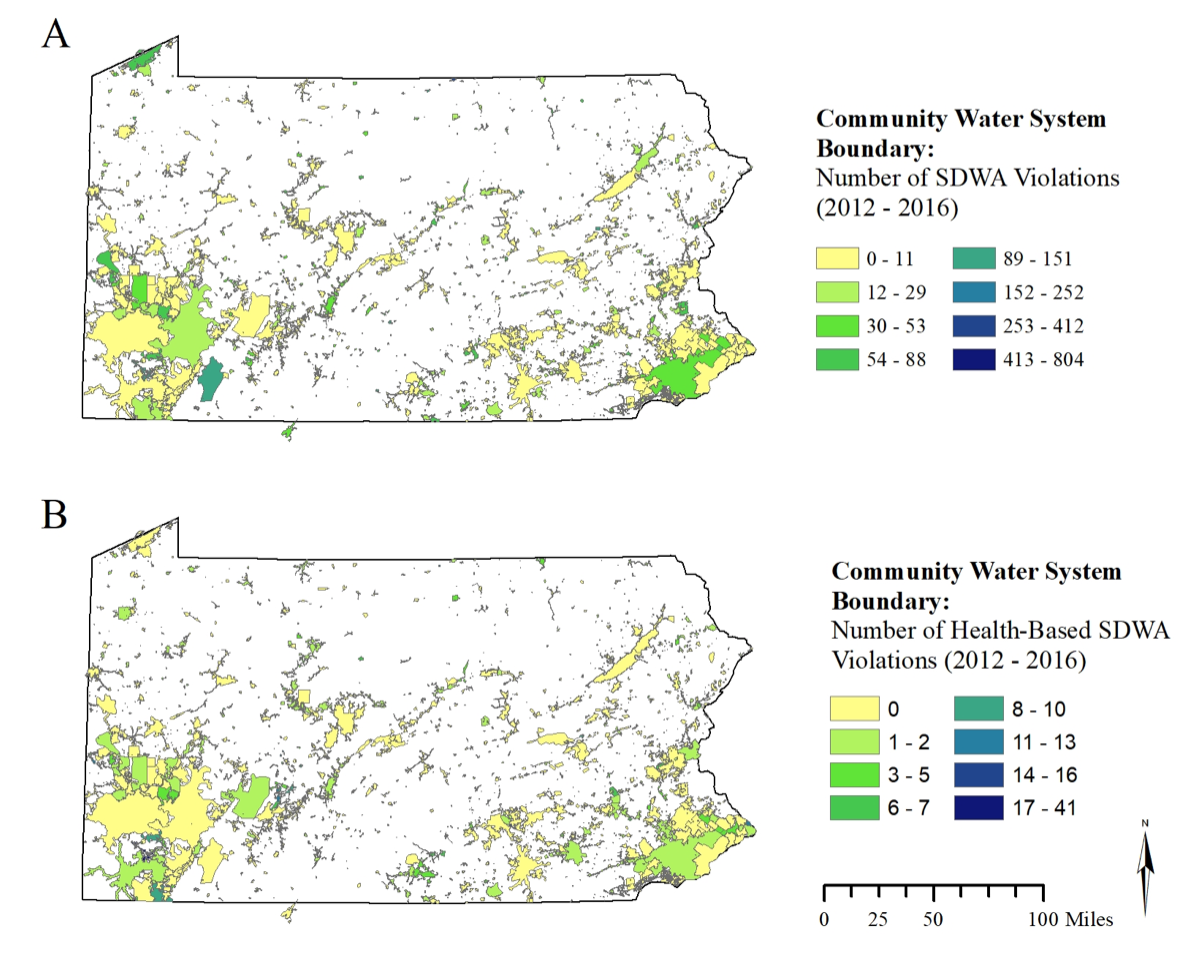Disparities in community water system compliance with the Safe Drinking Water Act

Zoe Statman-Weil, Leora Nanus, Nancy Wilkinson,
Disparities in community water system compliance with the Safe Drinking Water Act,
Applied Geography,
Volume 121,
2020,
102264,
ISSN 0143-6228,
https://doi.org/10.1016/j.apgeog.2020.102264.
(https://www.sciencedirect.com/science/article/pii/S0143622819304060)
Understanding potential disparities in community compliance with the Safe Drinking Water Act (SDWA) will help managers effectively and fairly allocate funding for improving drinking water systems. Environmental justice is experienced at the scale of the individual, the household, the neighborhood, or the water service provider and is too fine-grained a scale for spatial analysis with most available state datasets. This research represents an effort to ascertain which spatial analysis method selected to estimate the demographics of water service areas best supports environmental justice analysis at the state scale. To understand whether there are disparities in compliance with the SDWA, this study specifically investigated the relationship between socioeconomic status and race as well as other water system variables, and violations to the SDWA of community water system (CWS) in the state of Pennsylvania. The sociodemographic characteristics of the water systems were estimated using three different CWS-level spatial analysis methods (areal weighting, dasymetric mapping, areal interpolation) and a county-level spatial analysis method. Negative binomial regression was used to evaluate whether these sociodemographic characteristics, and other water system variables, including size of the water system, ownership, and water source, are associated with SDWA violations. This research demonstrates that the spatial analysis method selected for an environmental justice study can affect the results and conclusions of the research. Evidence that SDWA violations were associated with race or socioeconomic status was not found; however, this study did determine that small CWSs (<200 connections) and CWSs serving rural areas are less likely to be compliant with the SDWA.